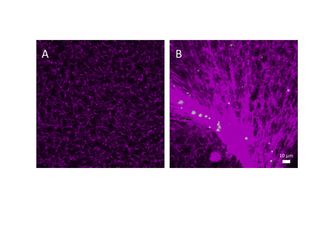Artificial Platelets Could Stop Battlefield Bleeding

BOSTON – New technology could help the blood to clot faster, potentially reducing blood loss in people suffering from life-threatening wounds, such as those sustained on the battlefield, researchers say.
Scientists have made a new biomaterial that mimics the function of platelets, components of blood that help with clotting, or sealing, a wound. In studies on animals, these "artificial platelets" augmented the work of natural platelets, reducing clotting time by 30 percent and blood loss by as much as 40 percent, the researchers said here today (Feb. 15) at the annual meeting of the American Association for the Advancement of Science.
The artificial platelets can be freeze-dried, and military personnel could potentially carry them onto a battlefield and inject them into wounded soldiers to reduce bleeding and improve chances of survival, said study researcher Thomas Barker, an associate professor in the department of biomedical engineering at Georgia Tech.
However, much more research is needed to test the artificial platelets in people and develop the technology that would allow the material to be transported and used on a battlefield, Barker said
When injected into the body, the artificial platelets circulate in the bloodstream, but don't start working until they've reached a wound. Once there, they are activated by the same proteins that trigger natural blood clotting. The need for a trigger is important; if the artificial platelets didn't require natural triggers, dangerous blood clots could form throughout the body, Barker said. When triggered, activated artificial platelets change formation, from squishy, disk-shaped particles into a thin film that helps seal the wound, Barker said.
Because the artificial platelets find wounds on their own, a user would not have to know where an injured person is bleeding for the treatment to work, Barker said. This would make the platelets especially useful for internal injuries, he said.
It's still not clear how long the artificial platelets can survive in the body, but if they can persist for some period, it's possible they could be used prophylactically, as a precaution in case injury occurs, Barker told MyHealthNewsDaily.
Sign up for the Live Science daily newsletter now
Get the world’s most fascinating discoveries delivered straight to your inbox.
Barker and colleagues had not specifically set out to create artificial platelets in their research, but stumbled across the material after combining two projects in their lab; they realized the resulting material acted in a way that was very similar to platelets.
The researchers hope to design artificial platelets that could direct the healing of a wound by releasing certain chemical signals, thereby reducing scaring.
If all goes well in the research and development process, Barker estimates a device with the artificial platelets could be available in 3 to 5 years.
Pass it on: Artificial platelets could speed up blood clotting and reduce bleeding in people with life-threatening wounds.
This story was provided by MyHealthNewsDaily, a sister site to LiveScience. Follow MyHealthNewsDaily on Twitter @MyHealth_MHND. Find us on Facebook.

Rachael is a Live Science contributor, and was a former channel editor and senior writer for Live Science between 2010 and 2022. She has a master's degree in journalism from New York University's Science, Health and Environmental Reporting Program. She also holds a B.S. in molecular biology and an M.S. in biology from the University of California, San Diego. Her work has appeared in Scienceline, The Washington Post and Scientific American.
Most Popular

